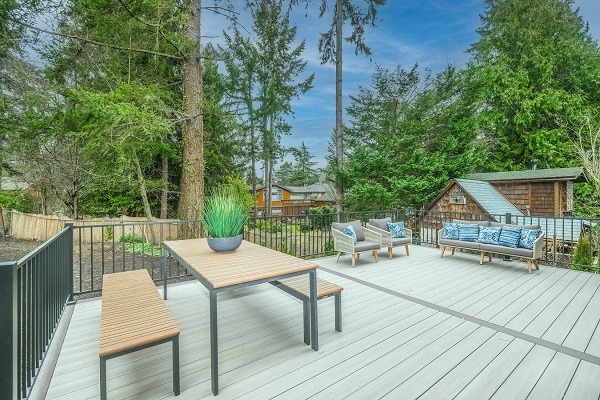Many people today are investing heavily in creating a beautiful porch or backyard. This is done by adding decorations, furnishings, plants, and more to be able to create the ultimate extension of your living space. In addition to those, adding decks is one of the most popular ways to improve the look of a patio or yard. Aside from making the space look lovely, they can also be used to cover different issues, such as cracked paving, bald lawns, and uneven surfaces.
When making decks, timber is a very popular option. However, since it is made of hardwood, it is susceptible to rotting, especially when placed outdoors in different weather conditions. This is why today, a modern, more durable, and environment-friendly option is beginning to become popular, and that is composite decking.
If it’s your first time to encounter the term composite decking and you want to know more about it, read on as we are going to give you more information on what it is.
What is Composite Decking?
Composite decking or also known as composite wood decking, brings together the durable and low maintenance features of plastic with the natural appeal of wood fibers, creating a strong, future-proof decking material. It can last years longer compared to traditional wood decking. It is made of plastics, wood fibers, and a small amount of bonding agents, which are heated and formed into board-shaped lengths and then cooled. The resulting board is low-maintenance but looks more authentic compared to other plastic alternatives.
A composite decking board can be made up of waste wood, such as ground-up wood from mills and furniture factories, and as well as recycled plastics like shredded polyethylene from milk jugs and shopping bags.
Types of Composite Decking
There are two types of composite decking, which are capped and uncapped:
Uncapped composite decking boards:
This type of composite decking tends to be cheaper. It is resistant and hard-wearing. However, it does not have superb protection against color fading and staining. This means that when you use uncapped decking boards, it may start to fade a bit in the first couple of months after installation. This is because residual tannins or wood oils leach out from the board when it is exposed to the environment.
Capped composite decking boards:
Capped composite boards, on the other hand, has an exterior plastic coating that makes the boards highly resistant to fading and staining. In addition, these are also easier to wipe and clean, and they can maintain their vibrant color even when exposed to the environment.
Benefits of Composite Decking
A lot of people today are choosing composite boards for their decking due to their benefits. Here are some of the advantages of composite decking:
Easy to install:
Composite decking boards are usually made with a “groove” system, which allows the planks to fit together easily using hidden fixings. With this system, it makes the boards easier and faster to install while giving them a clean, uniform look.
Safer than timber decks:
Unlike timber, composite decking boards do not produce splinter, making it a safer choice, especially for pets and if you like walking around barefoot. There are also composite decking boards that feature anti-slip properties, which are great during rainy and snowy days.
Beautiful appearance:
Composite decking is made with a finish that looks exactly the same as wood. Therefore, you don’t need to worry about missing the aesthetic quality of hardwood or timber.
Eco-friendly:
Most composite decking out there uses recycled materials, which place less demand on wood from forests and plantations.
Durable:
In most situations, using composite decking is quite similar to using wood. But it can be more durable as it is less likely to split or crack. Aside from that, it is also engineered to be resistant to stains and fading. And most importantly, it does not need any maintenance to keep its good looks. This makes it perfect for outdoor use.
Drawbacks of Composite Decking
Like any other thing, composite decking also has a disadvantage, which is its cost. No matter how you look at it, it costs more to purchase composite than timber. But it is still a better financial investment compared to wood because its benefits come into play in the long run. But it can help you save money over the long term as it requires virtually no maintenance. All you have to do is clean it with soapy water occasionally. Therefore, you do not need to spend any amount on resealing and resurfacing, which can help you add up your savings over many years.
Conclusion
Composite decking is indeed one of the best alternatives to wooden decks, especially if you are looking for something that is more durable and low-maintenance. Therefore, if you are planning to put a deck in your yard soon, maybe you might want to add composite decking to your options. We hope this post helped you in learning more about what composite decking is.


